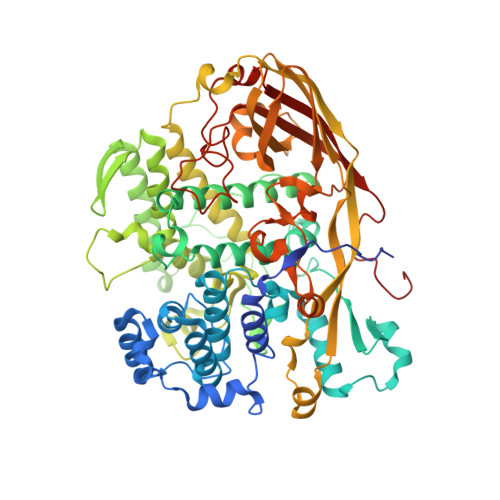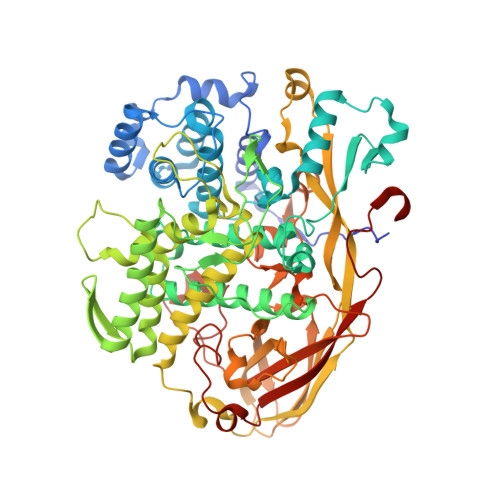Plastic degradation by insect hexamerins: Near-atomic resolution structures of the polyethylene-degrading proteins from the wax worm saliva.
Spinola-Amilibia, M., Illanes-Vicioso, R., Ruiz-L Formula See Text Pez, E., Colomer-Vidal, P., Rodriguez, F.V., Peces Perez, R., Arias, C.F., Torroba, T., Sol Formula See Text, M., Arias-Palomo, E., Bertocchini, F.(2023) Sci Adv 9: eadi6813-eadi6813
- PubMed: 37729416
- DOI: https://doi.org/10.1126/sciadv.adi6813
- Primary Citation of Related Structures:
8CA9, 8CAD, 8CAN, 8PO9 - PubMed Abstract:
Plastic waste management is a pressing ecological, social, and economic challenge. The saliva of the lepidopteran Galleria mellonella larvae is capable of oxidizing and depolymerizing polyethylene in hours at room temperature. Here, we analyze by cryo-electron microscopy (cryo-EM) G. mellonella 's saliva directly from the native source. The three-dimensional reconstructions reveal that the buccal secretion is mainly composed of four hexamerins belonging to the hemocyanin/phenoloxidase family, renamed Demetra, Cibeles, Ceres, and a previously unidentified factor termed Cora. Functional assays show that this factor, as its counterparts Demetra and Ceres, is also able to oxidize and degrade polyethylene. The cryo-EM data and the x-ray analysis from purified fractions show that they self-assemble primarily into three macromolecular complexes with striking structural differences that likely modulate their activity. Overall, these results establish the ground to further explore the hexamerins' functionalities, their role in vivo, and their eventual biotechnological application.
Organizational Affiliation:
Department of Structural and Chemical Biology, Centro de Investigaciones Biológicas Margarita Salas, CSIC, 28040 Madrid, Spain.




















